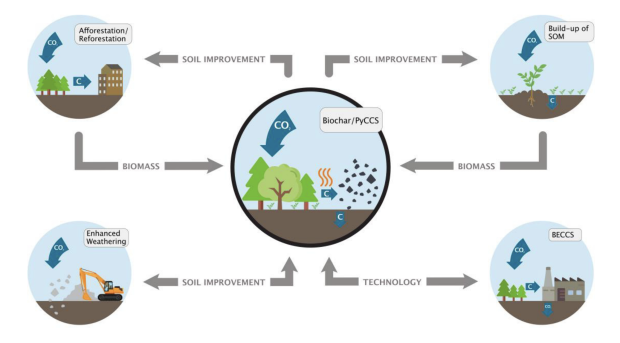The threat of climate change is increasing constantly. This is seriously bad news. And as this becomes more and more understood and accepted, the pressure on policymakers and business to act is also growing. As a result not only the European Union but also many companies have set themselves the goal of becoming climate neutral. The concept of climate neutrality means creating carbon sinks (negative emissions) whose volume is equal to that of carbon emissions. However, the potential for carbon sinks is limited and it will take years or even decades to develop them. Moreover, since the CO2 content in the atmosphere is already too high, it is imperative that swift and uncompromising action is taken to reduce emissions. From a technological point of view, industrialised economies have all the solutions necessary to be able to reduce their emissions by 90 - 95% in the next 15 - 20 years. Emissions reduction alone, however, is no longer sufficient to contain the climate crisis. In parallel with the reduction of emissions, a start must now be made on expanding and further developing the existing options for creating carbon sinks. The magnitude of the task is enormous: in order to achieve climate neutrality in the European Union, the volume of sinks to be created annually must increase to at least 850 million tonnes of CO2 by the year 2050. Three solutions: afforestation/reforestation; biochar/biomass pyrolysis; and the build-up of soil organic matter can be implemented in the short and medium term and there is no reason why they should not be expanded rapidly. They can be implemented at a relevant volume in the short term, they are cost-efficient because in spite of their costs they have primary or additional benefits and, if implemented well, they do not have a negative but in most cases a clearly positive impact on ecosystems. Biochar/biomass pyrolysis is thus a key technology for saving the climate. Biochar has been intensively researched in recent years. A wealth of experience with its applications and innumerable scientific publications prove today that in addition to its direct climate benefit as a carbon sink, biochar can be used in agriculture in many profitable and beneficial ways. Biochar can help to increase yields, promote humus formation, increase the water storage capacity of soils and thus raise their resistance to drought, and reduce greenhouse gas emissions such as methane and nitrous oxide as well as nitrate leaching. For carbon sinks to be created on the scale that is necessary, a carbon sink economy with appropriate financial incentives is needed. It is crucial that robust systems are developed that are auditable, that reliably avoid double counting and that map the durability of carbon sinks and thus the actual climate impact with scientifically sound calculation methods.
Learning topic
Media
Learning level
